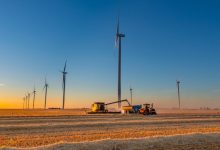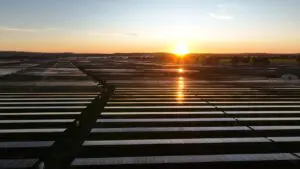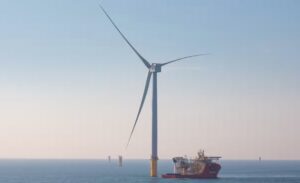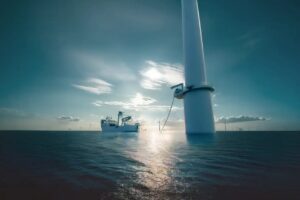Victoria has passed the half-way mark to its legislated target of 50 per cent renewable energy by 2030, with the announcement that the state has officially met its interim target of 25 per cent renewables by 2020.
Victoria’s energy minister Lily D’Ambrosio declared the milestone achievement in a speech to the Melbourne Press Club on Tuesday, the same day that the Labor Andrews government unveiled new energy efficiency targets for households and businesses.
Twenty five per cent.
We have met our target.
Of all the energy consumed in Victoria, 25% is created from renewable energy sources. pic.twitter.com/fP27Xa5Lx9
— Lily D’Ambrosio MP (@LilyDAmbrosioMP) December 8, 2020
The state now must turn its attention to the job of doubling that number in just 10 years, while also adapting its grid to accommodate the additional 5.4GW of new renewable energy capacity – both large-scale and small – the Australian Energy Market Operator estimates will be needed to meet the 2030 VRET.
This much greater task was the focus of many of the comments posted on Twitter in response to the news that the interim target had been met, interspersed with jabs at the Andrews government for its controversial decision to put a tax on electric vehicles in the state.
Others sought to correct D’Ambrosio’s claim that the state was now sourcing 25% of its “energy” from renewables, noting that it was only electricity that the target covered, and that there was much more work to be done on decarbonising other heavy-emitting sectors across the economy.
*electricity. Victoria’s tax on electric vehicles mean more people will drive fossil fuel burning vehicles and the state can’t achieve net zero emissions by 2050 according to experts. https://t.co/ztFRw44Plp
— Behyad Jafari ⚡???? (@BJafari) December 8, 2020
Awesome work Lily, thankyou. Electricity is relatively easy to decarbonise so we should aim high. Go for ????%. This will also help decarbonising transport. Buildings energy also needs tackling. And stopping deforestation to enhance forest carbon sinks.
— John Englart EAM ???????? (@takvera) December 8, 2020
On renewable electricity, at least, progress is being made. Victoria last month budgeted $540 million to develop six dedicated renewable energy zones (REZs) across the state, as part of an “unprecedented” $1.6 billion spend on renewable and smart energy initiatives, including a record $797 million set aside for energy efficiency.
The Andrews government said the $540 million would to establish six REZs – “from sunny Mildura to the windy east coast” – along the lines of the recommendations made in the Australian Energy Market Operator’s recent Transmission Roadmap for the state.
The Budget also set aside $12.6 million to underwrite the state’s second renewable energy auction, which will drive the development of 600MW of new clean energy generation capacity, some of which will be used to power state government operations and assets.
Another $108 million was earmarked for fast-tracking “innovative and transformational” renewable energy and hydrogen projects, including Australia’s first offshore wind farm, the proposed Star of the South.
Meanwhile, the state’s electricity prices appear to be headed downwards, contradicting the popular claim of the state opposition and Coalition members in federal government ranks that ambitious renewable energy targets equate to costly power for consumers.
Victoria’s Essential Services Commission said late last month that its decision to reduce the Victorian Default Offer for retail electricity prices in the state would result in a 10 per cent saving on average annual power bills for residential customers and a 14 per cent reduction for small business customers, starting on the first day of 2021.
The ESC said the decrease in retail prices was mainly due to forecast decreases in wholesale electricity and network costs. “The wholesale electricity costs included in our 2021 VDO cost stack for residential users will decrease by around 22 per cent when compared to the benchmark included in our 2020 determination,” it said.
Already, Origin Energy has said that it will be passing these cost cuts on to its retail customers, flagging an 11.3% decrease for residential tariffs, and a 12.9% decrease for small business customers on variable rate plans with annual consumption less than 40MWh.








